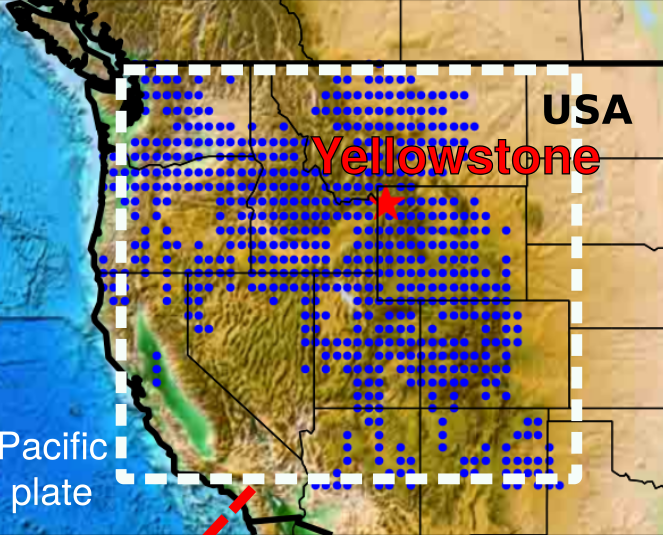There's a massive lake of liquid carbon sitting under Yellowstone
Estimates of the total amount of carbon held on Earth may have to be revised upwards.

The western US is sitting on a lake of melting carbon stretching over an area of 1.8 million square kilometres, or almost 20% of the entire country.
This reservoir holds carbon at a temperatures of more than 1,000C, and is buried about 350km below the surface of the US. The area it covers is equal to the areas of Germany, France, Italy and Spain combined, and it is between 25 and 70 km deep.
The reservoir is thought to have formed as a tectonic plate under the Pacific Ocean was forced underneath the west of the US, where it started to melt as it was pushed into the Earth's Upper Mantle. When carbonates contained in the rock that makes up the plate melt, they create a signature seismic pattern, which can be picked up by the sensitive array of sensors at the surface.
Scientists picked these up vibrations using the world's largest seismic array, made up of a network of 583 sensors that measure subtle vibrations in the crust. The results are published in a paper in the journal Earth and Planetary Science Letters.
Carbon gets into the Earth's mantle by subduction, where tectonic plates with carbon-rich rocks are forced down into the hot mantle region and melt. Less than half of that carbon typically re-emerges at the surface via volcanoes.
The study authors say there could be many more such lakes near other subduction zones. The finding suggests that the amount of carbon that the Earth holds has been underestimated, and there could be up to 100 trillion metric tonnes of carbon on the planet.
How much is 100 trillion metric tonnes?
100 trillion metric tonnes is 100 000 000 000 000 000 kg, which is the new estimate for the amount of carbon on Earth. That's equal to about 0.000002% of the weight of the whole Earth.
Global carbon emissions in 2011 were almost 10 billion metric tonnes. That's 10 000 000 000 000 kg.
If the new estimate is correct, global carbon emissions in 2011 were equivalent to about 0.01% of all the carbon held on Earth.
If just 1% of the carbon stored in these melted reservoirs were released into the atmosphere, it would be the equivalent of burning 2.3 trillion barrels of oil, the study authors said. However, it is not expected to rise up for a very long time.
"In this specific case, we think it has a longer residence time in the mantle. It could stay in the mantle for a long time, up to 1 billion years," study author Sash Hier-Majumder of Royal Holloway University of London told IBTimes UK.
"What is quite remarkable is that it shows that the mantle can act as a site for storing carbon naturally. So it's a very large amount of carbon that be sequestered in the mantle for a very long time. Some of it could be in the form of diamond."
© Copyright IBTimes 2025. All rights reserved.






















